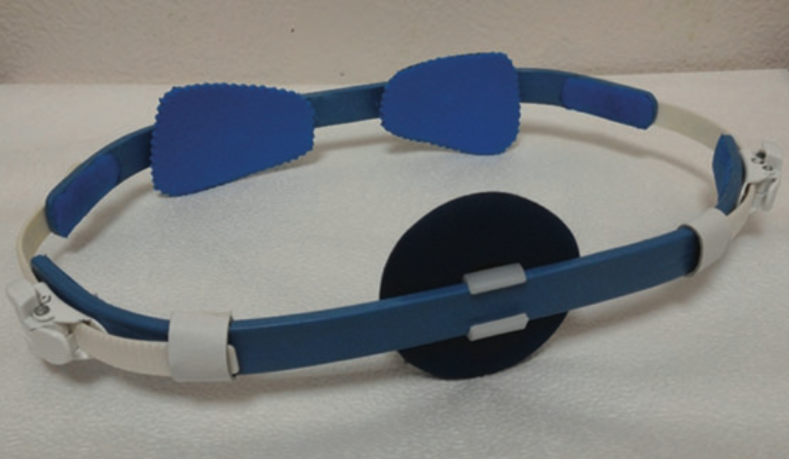Factors affecting patient compliance with compressive brace therapy for pectus carinatum

Lightweight, self-adjustable compressive brace designed for the treatment of pectus carinatum. Du-Young Kang, et al.
| Objectives |
The aim of this study was to identify factors affecting patient compliance with brace therapy for pectus carinatum.
| Methods |
Eighty-six pectus carinatum patients who started brace therapy from August 2008 to November 2011 were included in this study. Patients were divided into two groups: patients who wore the brace for ≥6 months (compliance group) or patients who wore the brace for <6 months (non-compliance group).
Factors affecting patient compliance were assessed at the last day of follow-up with a multiple-choice questionnaire. The questionnaire comprised seven items: pain at compression site, skin problems on compression area, confidence in brace treatment, shame, discomfort, initial result of bracing treatment and total number of factors affecting patient compliance.
| Results |
Eighty-six patients completed the survey, including seven (8.1%) female patients and 79 (91.9%) male patients, with a mean age of 12.0 years at the time of treatment (range, 3–20 years).
The initial result of the compression period (P <0.001) and total number of factors affecting patient compliance (P <0.05) were significant predictors of patient compliance.
| Conclusions |
An initial successful result of the compression period may increase patient compliance during treatment for pectus carinatum.
Additional efforts to decrease pain, skin problems, shame and discomfort, and to give confidence may be beneficial in increasing compliance with bracing treatment.
| References |
Factors affecting patient compliance with compressive brace therapy for pectus carinatum, Kang DY, Jung J, Chung S, Cho J, Lee S. Interact Cardiovasc Thorac Surg. 2014 Dec;19(6):900-3. doi: 10.1093/icvts/ivu280. Epub 2014 Aug 27.
| Further reading |
External Compressive Bracing With Initial Reduction of Pectus Carinatum: Compliance Is the Key, Ann Thorac Surg. 2020 Feb;109(2):413-419. doi: 10.1016/j.athoracsur.2019.08.026. Epub 2019 Sep 23. Full text
Outcomes Following Dynamic Compression Bracing for Pectus Carinatum, Dekonenko C, Dorman RM, Pierce A, Orrick BA, Juang D, Aguayo P, Fraser JD, Oyetunji TA, Snyder CL, St Peter SD, Holcomb GW 3rd. J Laparoendosc Adv Surg Tech A. 2019 Oct;29(10):1223-1227. doi: 10.1089/lap.2019.0171. Epub 2019 Jun 26.
Brace compression for treatment of pectus carinatum, Jung J, Chung SH, Cho JK, Park SJ, Choi H, Lee S. Korean J Thorac Cardiovasc Surg. 2012 Dec;45(6):396-400. doi: 10.5090/kjtcs.2012.45.6.396. Epub 2012 Dec 7. Full text
Pectus Carinatum: To Brace or Not to Brace—A Picture Is Worth 1770 Words, Nehra, Deepika MD; Ein, Sigmund H. MD; Tlumacki, Mark CO; Masiakos, Peter T. MD. JPO Journal of Prosthetics and Orthotics: July 2009 – Volume 21 – Issue 3 – p 167-170 doi: 10.1097/JPO.0b013e3181b2cd81. Full text
Effect of the compressive brace in pectus carinatum, Lee SY, Lee SJ, Jeon CW, Lee CS, Lee KR. Eur J Cardiothorac Surg. 2008 Jul;34(1):146-9. doi: 10.1016/j.ejcts.2008.04.012. Epub 2008 May 13.
